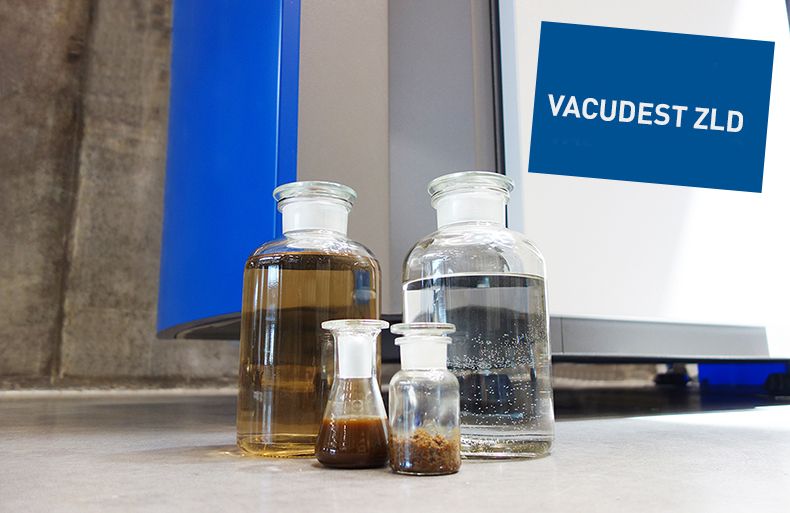
Introduction
Demystifying Zero Liquid Discharge (ZLD) Systems: An In-Depth Exploration
Zero Liquid Discharge (ZLD) systems have emerged as a sustainable solution to address the challenges of water scarcity and pollution. By eliminating liquid waste discharge, these innovative systems play a crucial role in preserving water resources and protecting the environment. In this comprehensive guide, we delve into the workings of ZLD systems, exploring their components, processes, and benefits.
Understanding Zero Liquid Discharge (ZLD)
At its core, Zero Liquid Discharge is a water treatment process that aims to recover all wastewater generated by an industrial operation, leaving behind no liquid effluent for discharge. Unlike traditional wastewater treatment methods that may produce significant volumes of discharge, ZLD systems treat wastewater to stringent standards, enabling the reuse of treated water and the recovery of valuable resources.
Components of ZLD SystemsZLD systems consist of several key components, each playing a critical role in the overall process:
1.Pre-treatment:
Before entering the ZLD system, wastewater undergoes pre-treatment to remove coarse solids, oils, and other contaminants. This step helps protect downstream equipment and ensures optimal performance of the ZLD system.
2. Membrane Filtration:
ZLD systems often incorporate membrane filtration technologies, such as reverse osmosis (RO) and ultrafiltration (UF), to separate dissolved solids, contaminants, and impurities from the wastewater stream. Membrane filtration enables the production of high-quality treated water suitable for reuse or discharge.
3. Evaporation:
In the evaporation stage, the concentrated wastewater from membrane filtration undergoes thermal treatment to remove water through evaporation. This process results in the crystallization of dissolved solids, such as salts and minerals, which can be recovered for reuse or disposal.
4. Crystallization:
Crystallization is a key step in ZLD systems where dissolved solids precipitate out of the concentrated wastewater as crystals. These crystals can be harvested and further processed to extract valuable salts or minerals, minimizing waste and maximizing resource recovery.
5. Solid-Liquid Separation:
The final step in the ZLD process involves solid-liquid separation to remove any remaining solid waste from the treated water. This ensures that the discharged water meets regulatory standards and environmental requirements.
Benefits of ZLD Systems
Zero Liquid Discharge systems offer a myriad of benefits for industries and the environment:
– Water Conservation : By recovering and reusing wastewater, ZLD systems help conserve freshwater resources and reduce the strain on water supplies.
– Environmental Protection : By eliminating liquid waste discharge, ZLD systems minimize the impact of industrial effluents on water bodies and ecosystems, reducing pollution and safeguarding environmental health.
– Resource Recovery : ZLD systems enable the recovery of valuable resources from wastewater, such as clean water, salts, and minerals, creating opportunities for reuse and resource optimization.
– Compliance and Sustainability : ZLD systems help industries comply with regulatory requirements and sustainability goals by treating wastewater to stringent standards and minimizing environmental impact.

Challenges and Considerations
While ZLD systems offer significant benefits, they also come with challenges and considerations:
– Cost : The capital and operating costs of ZLD systems can be substantial, requiring significant investment from industries.
– Energy Consumption : ZLD systems often require energy-intensive processes, such as membrane filtration and evaporation, which can contribute to operational costs and environmental footprint.
– Technical Complexity : Designing, installing, and operating ZLD systems requires expertise in water treatment, engineering, and process optimization.
Conclusion :
Zero Liquid Discharge (ZLD) systems represent a pioneering approach to water treatment, offering a sustainable and integrated solution to manage wastewater effectively. By eliminating liquid waste discharge and maximizing resource recovery, ZLD systems play a vital role in promoting water conservation, environmental protection, and industrial sustainability. As industries strive to address the challenges of water scarcity and pollution, ZLD emerges as a critical technology to ensure the responsible stewardship of water resources for generations to come. Through ongoing innovation, investment, and collaboration, we can unlock the full potential of ZLD systems and create a more water-secure and resilient future.
